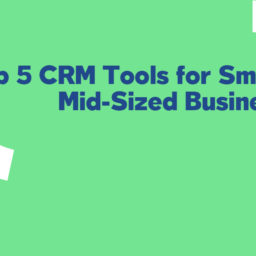In today’s competitive marketplace, businesses are constantly looking for ways to stay ahead of the curve. One of the most powerful tools at their disposal is customer data. By leveraging the wealth of information available from customer interactions, businesses can make more informed, strategic decisions that lead to improved products, services, and overall customer satisfaction. This blog will explore how to effectively use customer data to drive business decisions and enhance your company’s growth.
1. Understanding the Types of Customer Data
Before diving into how to use customer data, it’s important to understand the different types of data available. Customer data can be categorized into four main types:
- Demographic Data: Information such as age, gender, income, education, and occupation. This data helps businesses segment their audience and tailor their marketing efforts.
- Behavioral Data: Insights into how customers interact with your brand, including purchase history, website visits, email interactions, and social media activity. This data helps businesses understand customer preferences and behaviors.
- Psychographic Data: Data that reveals customers’ interests, values, attitudes, and lifestyles. This type of data is useful for creating personalized marketing campaigns that resonate with customers on a deeper level.
- Transactional Data: Information related to transactions, such as purchase amounts, frequency, and payment methods. This data helps businesses analyze buying patterns and customer value.
Understanding these types of data is the first step in using customer data effectively. By combining these data points, businesses can create a comprehensive view of their customers, enabling more informed decision-making.
2. Identifying Key Business Goals
To effectively use customer data, businesses must first identify their key business goals. Whether it’s increasing sales, improving customer retention, launching new products, or enhancing customer satisfaction, having clear objectives will guide the data analysis process.
Examples of business goals include:
- Increasing Customer Lifetime Value (CLV): Understanding which customers are most valuable and how to maximize their long-term value.
- Improving Customer Retention: Identifying patterns that lead to customer churn and developing strategies to keep customers engaged.
- Enhancing Product Development: Using customer feedback and behavior data to inform the development of new products or the improvement of existing ones.
- Optimizing Marketing Campaigns: Tailoring marketing efforts based on customer data to improve targeting and increase ROI.
Once business goals are established, businesses can focus on gathering and analyzing the relevant customer data to achieve these objectives.
3. Collecting and Organizing Customer Data
Collecting customer data is a critical step in the process. Businesses can gather data from various sources, including:
- Website Analytics: Tools like Google Analytics provide insights into website traffic, user behavior, and conversion rates.
- CRM Systems: Customer Relationship Management (CRM) systems store valuable customer information, including contact details, purchase history, and communication records.
- Social Media Platforms: Social media insights offer data on customer engagement, sentiment, and demographics.
- Surveys and Feedback Forms: Directly asking customers for feedback through surveys can provide valuable qualitative data.
- Transaction Records: Sales data, including purchase history and payment methods, can reveal buying patterns and customer preferences.
Organizing this data in a centralized system, such as a CRM or data management platform, is crucial for easy access and analysis. Ensuring data cleanliness—removing duplicates, correcting errors, and updating outdated information—is also essential for accurate analysis.
4. Analyzing Customer Data for Insights
Once the data is collected and organized, the next step is analysis. Analyzing customer data allows businesses to uncover patterns, trends, and insights that inform decision-making.
Key analysis methods include:
- Segmentation: Grouping customers based on shared characteristics, such as demographics, purchase behavior, or engagement levels. This helps businesses tailor their strategies to different customer segments.
- Predictive Analytics: Using historical data to predict future customer behavior, such as predicting which customers are likely to churn or which products they are likely to purchase next.
- Customer Journey Mapping: Analyzing the customer journey from initial contact to post-purchase to identify touchpoints that influence customer decisions and satisfaction.
- Sentiment Analysis: Using tools to analyze customer feedback and social media mentions to gauge customer sentiment and identify areas for improvement.
By analyzing customer data, businesses can gain a deeper understanding of their customers, which is essential for making data-driven decisions.



